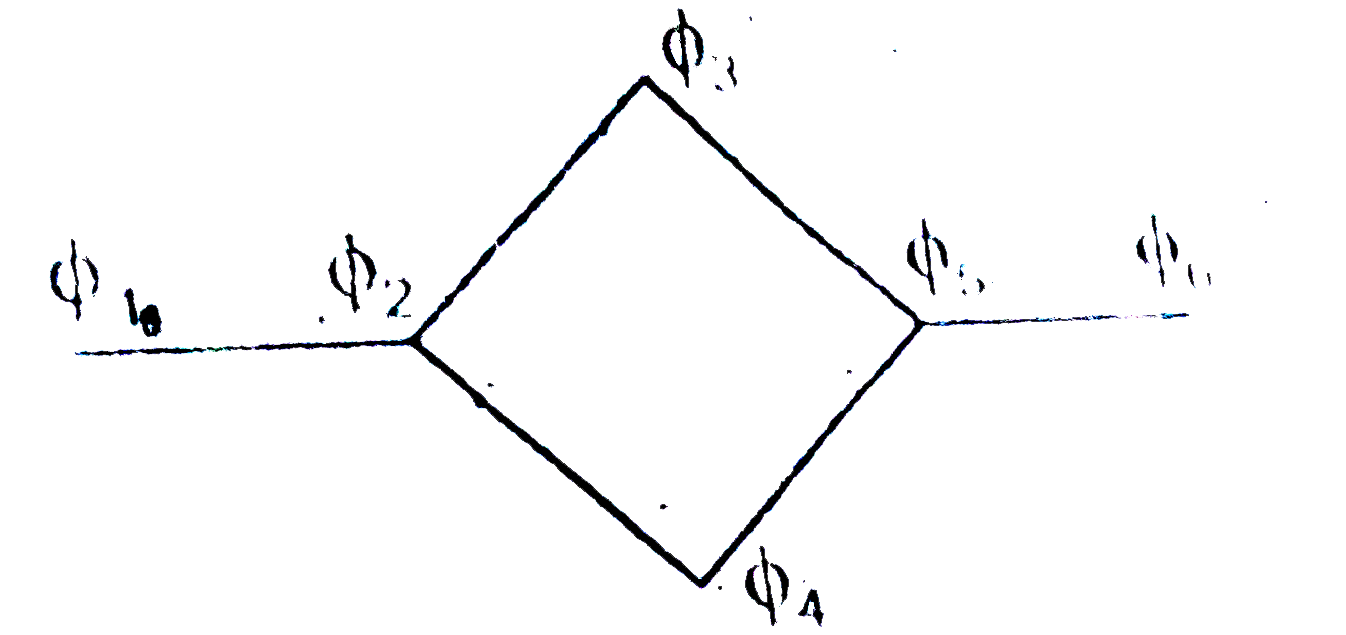Two identical conducting rods are first connected independently to two vessels, one containing water at 100∘C and the other containing ice at 0∘C. In the second case, the rods are joined end to end and connected to the same vessels. Let q1andq2 gram per second be the rate of melting of ice in the two cases respectively. The ratio q1q2 is
(a) 12 (b)21 (c)41 (d)14
12
21
41
14
The correct Answer is:C
Initially the rods are in parallel
Qt=θ1−θ2R
⇒(Qt)1=mLt=q1L=100−0R2............(i)
Finally when rods are in series
⇒(Qt)2=mLt=q2L=100−02R..............(ii)
From Eqs. (i) and (ii),
q1q2=41
Topper's Solved these Questions
- CALORIMETRY AND HEAT TRANSFERBook:DC PANDEYChapter:CALORIMETRY AND HEAT TRANSFERExercise:Assertion and reason
Explore 17 Videos
- CALORIMETRY AND HEAT TRANSFERBook:DC PANDEYChapter:CALORIMETRY AND HEAT TRANSFERExercise:Match the columns
Explore 4 Videos
- CALORIMETRY AND HEAT TRANSFERBook:DC PANDEYChapter:CALORIMETRY AND HEAT TRANSFERExercise:Check points 16.4
Explore 25 Videos
- CALORIMETRY & HEAT TRANSFERBook:DC PANDEYChapter:CALORIMETRY & HEAT TRANSFERExercise:Level 2 Subjective
Explore 14 Videos
- CENTRE OF MASSBook:DC PANDEYChapter:CENTRE OF MASSExercise:Medical entrances gallery
Explore 27 Videos
Similar Questions
Six identical conducting rods are connected as shown in figure. In steady state temperature of point ϕ1 is fixed at 100∘C and temperature of ϕ6 at −80∘C

Q. What is the temperature of ϕ2?
View SolutionTwo conductors, one having resistance R and another 3R are connected in turn across a d.c. source. If the rate of heat produced in the two conductors is Q1 and Q2 respectively, then find their ratio.
View Solution
Knowledge Check
Two identical conducting rods are first connected independently to two vessels, one containing water at 100∘C and the other containing ice at 0∘C. In the second case, the rods are joined end to end connected to the same vessels. Let m1andm2 g/s be the rate of melting of ice in the two cases respectively, the ratio m1m2 is
A1:2B2:1C4:1D1:4Two identical rods are connected between two containers on of tehm is at 100∘C and another is at 0∘C. If rods are connected in parralel them the rate of melting of ice is q1gm/sec.
If they are connected in series then the rate is q2. The ratio q2/q1 isA2B4C1/2D1/4One end of a cylindrical rod is kept in steam chamber and the other end in melting Ice. Now 0.5gm of ice melts in 1sec if the rod is replaced by another rod of same length half the diameter then rate of melting of ice will be (in gm/sec) .
A0.25B0.5C1D2
Two identical rods are connected between two containers. One of them is at 100∘C containing water and another is at 0∘C containing ice. If rods are connected in parallel then the rate of melting of ice is q1g/s . If they are connected in series then teh rate is q2g/s . The ratio q2/q1 is
View SolutionTwo identical rods are connected in parallel. One end of the rods is maintained at 100∘C and other end is kept in 0∘C ice . The rate at which the ice melts is Q1 gm/sec . Now the rods are connected in series . The ends are again maintained at 100∘C and kept in 0∘C ice . Now the rate at which ice melts is Q2 gm/sec . Then Q2/Q1 is
View SolutionTwo conducting rods when connected between two points at constant but different temperatures separately, the rate of heat flow through them is q1andq2.
View SolutionA cylindrical rod with one end in a steam chamber and the other end is in ice It is found that 1gm of ice melts per second If the rod is replaced by another one of same material double the length and double area of cross section, The mass of ice that melts per second is .
View SolutionTwo vessels of the same volume contain the same gas at same temperature. If the pressure in the vessels is in the ratio of 1 : 2, then
View Solution